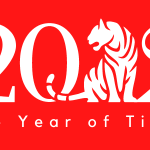
Communication and security technologies provided the backbone of business continuity during the pandemic. Without them, business operations would have been more difficult, demonstrations of products would have stalled, data breaches would have continued to escalate, and important channels of communication that took years to establish might have closed. Unified solutions came to the rescue of businesses the world over. A unified solution is one where the whole is greater than the sum of the parts. Cloud computing has provided the backbone for the unification of various technologies to bring best-of-breed solutions to business. But what are unified solutions and what should we expect to see over the next year and beyond?
Types of unified solutions
Consolidation and unification of technology solution capabilities is a trend across the tech landscape. Two unified technology solutions to watch out for in 2022 and beyond are in the areas of:
Communications
A Unified Communication (UC) system brings together all the channels used by a business to communicate. This typically includes video conferencing, phones, email, mobile messaging, contact center, and so on. Unified communication usually comprises a backend system that is connected via a front-end user interface. Unified Communication platforms streamline the various channels, allowing employees to collaborate seamlessly across these channels. For example, unified messaging will ensure that messages from various applications can be accessed in a single inbox.
Unified communications in 2022
Unified Communications is helping in the drive to digitally transform businesses. During the pandemic, UC was a vital tool used to maintain communication when staff was sent to work from home. The Work from Anywhere movement and flexible working looks likely to continue; this paradigm in work environments will require a persistent UC system to create efficient and robust communications. Areas to look out for in the UC sector are:
- SIP (Session Initiation Protocol) is used in multimedia calls and is one of the protocols behind VOIP (Voice Over IP). SIP is being seen as increasingly important in seamless multi-channel communications and to cut call costs.
- Research from Nemertes, has shown that 67% of organizations are looking to move their UC to the cloud. Personal devices used for remote working is part of the push for Unified Communication platforms. Cloud UC is another area that is moving communications into the future, with cloud being a more scalable and cost-effective way to provide a Unified Communication platform.
- Delivery of Unified Communications-as-a-Service (UCaaS) by a managed service provider (MSP) is likely to cover the skills gap in this area and be cost-effective for many companies. An MSP can do all the legwork in evaluating solutions as well as the implementation and deployment of UCaaS.
Cybersecurity
A highly connected world with disparate business units, including Work from Anywhere employees, has opened opportunities for cybercriminals. A 2021 Threat Landscape Report from ENISA says this about the current cyber-threat situation:
“the cybersecurity landscape has grown in terms of sophistication of attacks, their complexity and their impact.”
Cybersecurity threats are so widespread and complicated that a single point of protection is simply not enough. A unified approach to building a secure enterprise is needed. Unified cybersecurity is an approach that adopts a ‘secure by design’ method of protecting a business against all the many attack vectors, including insider threats.
A Unified cybersecurity management platform (UCM) orchestrates a variety of security solutions to discover, detect, analyze, report, on cyber-threats. A UCM monitors the network and devices from a central console. The system is enabled by automation technologies.
Some unified security platforms bring together cloud-native and third-party security solutions into one converged platform to deliver comprehensive security. These platforms are often managed by a SOC (Security Operations Center), sometimes delivered as-a-service via a specialist MSP.
Unified cybersecurity in 2022
The volume of cyber-attacks is at unprecedented levels. The Identity Theft Resource Center (ITRC) has tracked data breaches since 2005. In 2021, they declared that the year was a “record-breaking year for data compromises.”
Cybersecurity threat mitigation is increasingly difficult as new vectors enter the landscape and existing ones evolve to evade detection. Unified cybersecurity platforms bring together effective and powerful cybersecurity technologies that work harmoniously to stop cyber-attacks. Areas to look out for in unified cybersecurity are:
- The convergence of SD-WAN and cybersecurity was encapsulated, back in 2019, by Gartner Inc., in the framework known as Secure Access Service Edge (SASE). SD-WAN was developed to accommodate the growing use of cloud infrastructures. SD-WAN uses software to control and manage device connectivity across remote access points, such as a branch or a home office. SD-WAN does not, however, provide connectivity comprehensive security. SASE integrates security technologies such as Firewall-as-a-Service (FWaaS), Zero Trust Network Architecture (ZTNA), and Extended Detect and Repose (XDR) solutions, into SD-WAN, to protect data from anywhere access and cloud-based security vulnerabilities.
- SASE is fast becoming a de facto way to implement SD-WAN. As MSPs are often behind digital business infrastructure operations, they are perfectly positioned to deliver and implement SASE. Watch out for SASE platforms that can be delivered and managed by an MSP.
Unified software services
Unified technologies need a unified approach to delivery, support, and maintenance. The new unified technology platforms are typically available as-a-Service, fitting with most cloud infrastructure and delivery models. The thriving MSP market, predicted to grow by over 12% to 2027 with a value of USD 311.32 billion, is ideally placed to evaluate, deliver, and manage, the new unified platforms. Areas to look out for in the UC sector are:
- An MSP who can deliver above and beyond technology offers extra value. An MSP who can act as a collaborative partner can help to evaluate products on your behalf and find the perfect one for your organization. This helps to future-proof your company against changing technologies and regulation updates.
The technology planets align to bring unification
Unified solutions are increasingly popular because they provide a more comprehensive range of functionality. The underlying capabilities are tightly integrated to bring symbiotic solutions together in a move away from complex multi-vendor solutions that may not work well together or leave gaps in functionality.
The consolidation of technology is a movement that has come about as the technology planets have aligned. The mix of Work from Anywhere, an increased need for cloud app access from remote places, a high volume of sophisticated cyber-attacks, and regulations bearing down on businesses, are driving the need for solutions that fit all these needs. IT is a strategic part of an organization; as such, this partnership needs to deliver innovation, growth opportunities, and to facilitate organizational processes, including communication and security: with a unified approach to technology, IT departments alongside MSP partners, can deliver this strategic vision.



